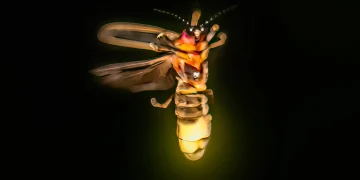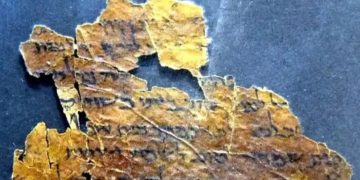
Journalists often try to avoid repetition when referencing something for the second time in an article.
A banana, for example, could be described somewhat plainly on its second mention in a news story as ‘the fruit’. However, some writers like to be a little more playful with their synonyms, opting instead for ‘the elongated yellow fruit’, ‘the curvy favourite’ or perhaps ‘the energy-rich treat’.
For us, spotting these second mentions started out as a hobby, but it rapidly became a passion. In 2013, we set up our Second Mentions account on X (or ‘the formerly-known-as-Twitter app’) to share examples we found in newspapers and magazines and our following grew quickly.
We are a husband-and-wife team and, when we started out, Juliet was a digital content editor at a national newspaper, having previously been a reporter for a local newspaper in London, while Matthew has worked in sport for more than 15 years.
Our interest in second mentions was sparked by some of the first examples we found, including ‘the ink-filled mollusc’ for an octopus and ‘the minuscule subsoil parasites’ for nematodes. Our new book, entitled The Little Book of Second Mentions, is a celebration of our favourites.
So where do we find second mentions? There are certain topics and stories that are usually rife with good examples, such as articles about food (as we have seen with bananas) or animals (particularly pigs, pandas, giraffes and hedgehogs), and we often feel disappointed when they are lacking. One article about hedgehogs featured the word ‘hedgehogs’ 27 times, without even a single mention for ‘the prickly animal’ or ‘the spiky creature’.
Every day, we are sent examples spotted by journalists, who sometimes claim responsibility for their own, or by other readers who enjoy the simple pleasure of happening upon them while reading the news.
We’re often asked for our favourite second mentions. Some that always raise a smile in the Second Mentions household include ‘the famous black-and-white flightless birds’ for penguins, ‘the monochrome mammals’ for pandas and any time a pig is referred to as a ‘porker’.
Journalists compete for the best ‘second mentions’
As you might imagine, journalists are a pretty competitive bunch and some consider second mentions to be a form of sport, vying for who can squeeze the most elaborate and exquisite second mentions into their articles.
This can lead to examples such as ‘the porcine-poultry hybrid’ for Scotch eggs, ‘the emulsified high-fat offal tubes’ for sausages and ‘the wibbly wobbly treat’ for jelly. Another of our food-based favourites is ‘the purportedly portentous pastries’ for fortune cookies.
From the animal kingdom, we particularly enjoyed ‘the screaming snack snatchers’ as a second mention for seagulls, ‘the striped picnic botherers’ for wasps and ‘the trouser-leg botherer’ for a particularly frisky ferret.
From the world of music, our favourites include ‘the pugnacious parka-wearer’ for Liam Gallagher, ‘the helmet-loving duo’ for Daft Punk and ‘the top-hatted Guns N’ Roses guitar great’ for Slash. However, the winner in this category, and perhaps even our favourite second mention of all time, goes to ‘the Colombian star, philanthropist and committed believer in the veracity of hips’ for the singer Shakira.
Often writers contact us when they are stuck on a particular word and in need of creative inspiration, and our followers are always quick to step in with suggestions. Sometimes these will make it to print, and sometimes it is more of a chance to workshop ideas with fellow writers.
Fish fingers: From ‘cod digits’ to ‘becrumbed piscine cuboid’
One time, we had so enjoyed ‘the cod digits’ as a second mention for fish fingers that we invited our followers on X to suggest further examples and they certainly came up with the goods. Our favourites were ‘the oceanic oblong’, ‘the becrumbed piscine cuboid’, ‘the flaky cod appendage’, ‘the piscatorial phalanx’ and, behold, ‘Neptune’s crispy pointer’.
Second mentions, as you might expect, are also known by other names, such as ‘elegant variation’ or ‘knobbly monsters’ (itself a second mention for crocodiles), while The Guardian style guide has an entry specifically for ‘Pov’, which stands for ‘popular orange vegetable’, in reference to how often it is used as a second mention for the word ‘carrot’.
We have even had second mentions for our Second Mentions account, including ‘the non-primary allusion handle’, ‘the affectionately mocking Twitter account’ and ‘the need-to-find-another-way-to-say-it art form’.
The joy of the English language is that there are so many different ways for writers to express themselves, and we embrace their creativity.
If you are new to Second Mentions, then we hope this inspires you to discover your own examples in the articles you read (or write) from now on, and to share them with us. If you’ve been following us for some time, or have already contributed to our account, then thank you. Every day, the submissions that are sent to us have raised a smile, and putting together this book has allowed us to relive those moments over and over again.
The Little Book of Second Mentions by Juliet and Matthew Maguire, published by Biteback, is out now.
The post Second mentions: What makes a good ‘knobbly monster’? appeared first on Press Gazette.





























